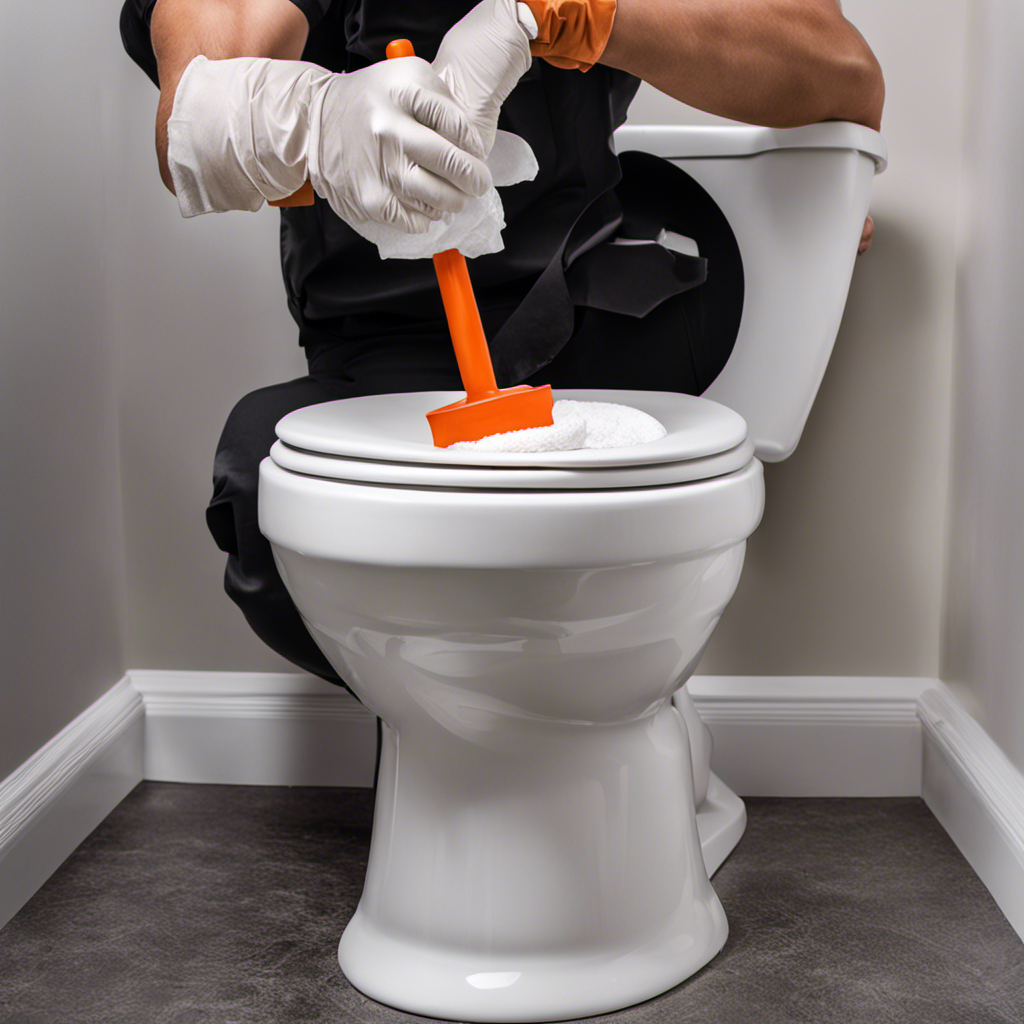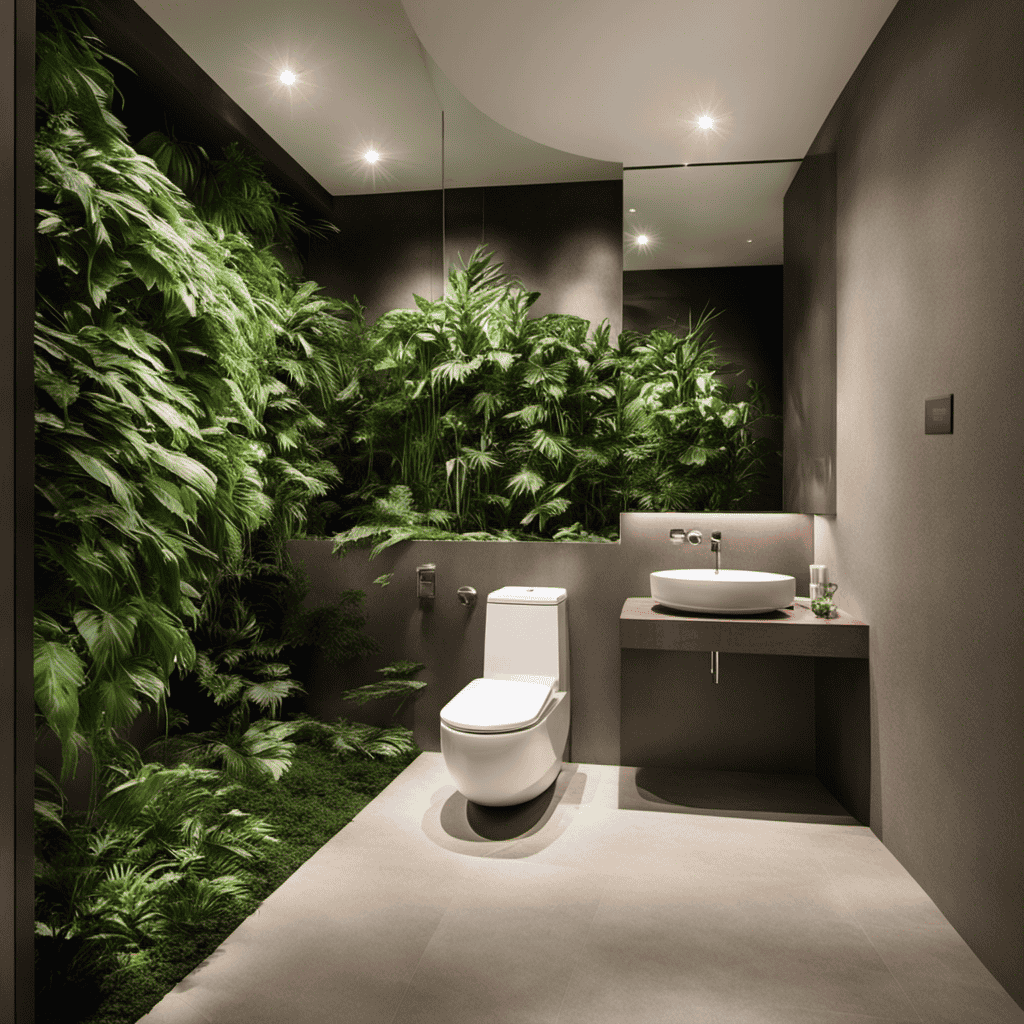As a homeowner, I was shocked to learn that toilets can randomly overflow even when not in use. Did you know that this is a common issue that many people face?
In this article, I will explore the possible causes of a random toilet overflow and provide steps you can take to prevent it from happening. Additionally, I will discuss the signs and symptoms to look out for and when it is necessary to call a professional for help.
Let’s dive in and tackle this frustrating problem together.
Key Takeaways
- Possible causes of toilet overflow when not in use include clogged pipes, faulty fill valves or floats, obstructions in the bowl, clogged drain lines, and misaligned or damaged components.
- Signs and symptoms of a random toilet overflow include water spilling onto the floor, unusual gurgling sounds, slow draining or flushing, water backing up into other fixtures, and a foul odor coming from the toilet.
- Steps to take when your toilet randomly overflows include shutting off the water supply, inspecting the flapper valve and float mechanism, checking for clogs in the toilet bowl, considering calling a professional plumber, and taking prompt action to prevent further damage.
- To prevent a toilet from overflowing when not in use, you should check the water level in the tank, inspect and replace the flapper valve if necessary, clean the toilet drain regularly, check and replace the faulty fill valve, and consult a professional plumber if the problem persists.
Possible Causes of Toilet Overflow
One possible cause of the toilet overflowing could be a clogged pipe. When a pipe gets clogged, water can’t flow freely, causing it to back up and overflow. This is one of the most common toilet problems homeowners face.
To troubleshoot toilet overflow, start by checking if the bowl is clogged. Use a plunger to try and remove the obstruction. If that doesn’t work, the clog may be further down the pipe. In this case, you might need to use a toilet auger or call a professional plumber.
Another cause of toilet overflow could be a faulty fill valve or float. These parts regulate the water level in the tank and if they malfunction, the tank can overfill and lead to overflow. Check these components for any damage or misalignment and replace them if necessary.
Signs and Symptoms of a Random Toilet Overflow
If you notice water spilling onto the floor and an unusual gurgling sound, you might be experiencing signs and symptoms of an unexpected toilet overflow. This can be a frustrating and messy issue to deal with, but understanding the common causes and troubleshooting methods can help resolve the problem.
Here are some signs and symptoms to look out for:
- Water spilling onto the floor
- Unusual gurgling sounds
- Slow draining or flushing
- Water backing up into other fixtures
- Foul odor coming from the toilet
To troubleshoot toilet issues, start by checking the water level in the tank, ensuring it’s not too high or too low. Next, inspect the flapper valve and flush handle to ensure they are functioning properly. If the problem persists, it may be necessary to call a professional plumber to inspect and repair any underlying issues.
Steps to Take When Your Toilet Randomly Overflows
Start by quickly shutting off the water supply to prevent further damage during a random toilet overflow. Common toilet problems can lead to unexpected overflows, causing inconvenience and potential water damage.
When faced with a random overflow, it is important to act swiftly and effectively to minimize the impact. First, locate the water shut-off valve near the base of the toilet and turn it clockwise to stop the flow of water.
Next, remove the tank lid and inspect the flapper valve and float mechanism for any issues. Check for any clogs in the toilet bowl using a plunger or a toilet auger.
If the problem persists, it may be necessary to call a professional plumber to troubleshoot the toilet issues. By taking prompt action and following these steps, you can prevent further damage and ensure the efficient functioning of your toilet.
To prevent a toilet from overflowing when not in use, it is essential to address any underlying issues and perform regular maintenance.
How to Prevent a Toilet From Overflowing When Not in Use
To prevent your toilet from overflowing when it’s not being used, make sure to address any underlying issues and regularly perform maintenance. Here are some steps you can take to prevent a toilet overflow:
-
Check the water level: Ensure that the water level in your toilet tank is not too high. If it is, adjust the float valve to lower it.
-
Inspect the flapper valve: The flapper valve is responsible for controlling the flow of water from the tank to the bowl. If it’s worn or damaged, replace it.
-
Clean the toilet drain: Over time, debris can accumulate in the toilet drain, leading to clogs and potential overflows. Use a toilet auger or plunger to remove any blockages.
-
Check the fill valve: The fill valve regulates the water level in the tank. If it’s faulty, it can cause the toilet to overflow. Replace it if necessary.
-
Call a professional: If you’ve tried everything and the problem persists, it’s best to consult a professional plumber who can diagnose and fix any underlying issues.
Calling a Professional: When to Seek Help for a Random Toilet Overflow
Sometimes, you may need to seek professional help when your toilet unexpectedly overflows. Knowing when to DIY and when to call a professional is crucial in handling this situation.
There are common mistakes that can lead to toilet overflows, such as a clogged drain line, faulty flapper valve, or a malfunctioning fill valve. DIY solutions like plunging or using a toilet auger can be effective for minor clogs, but if the problem persists, it’s time to bring in a professional.
A plumber has the expertise and specialized tools to diagnose and fix the underlying issue. They can also ensure that the toilet is properly reassembled and functioning correctly. Don’t hesitate to call a professional if you’re unsure or if the problem persists despite your DIY efforts.
Conclusion
In conclusion, when faced with a randomly overflowing toilet, it’s crucial to swiftly assess the situation and take immediate action.
By understanding the possible causes and recognizing the signs and symptoms, one can effectively address the issue.
Implementing preventive measures such as regular maintenance and proper usage can significantly reduce the chances of a toilet overflow.
However, if the problem persists, it’s recommended to seek professional assistance to ensure a long-term solution.
Remember, prompt attention is paramount to prevent potential water damage and restore peace of mind.










